Did you know the largest penguins in the world are emperor penguins? These flightless birds can reach 1.2 meters (4 feet) in height and can weigh up to 45 kilos (100 pounds)! Their size helps them stay warm, since larger bodies are better at retaining heat. Emperor penguins are carnivores that eat krill, fish, and squid. Since they are adapted to survive in Antarctica, a substantial portion of the energy they obtain from feeding is used to develop a thick covering of fat around their bodies. Want to know more about these fascinating birds? Let’s look closely at 10 incredible emperor penguin facts!
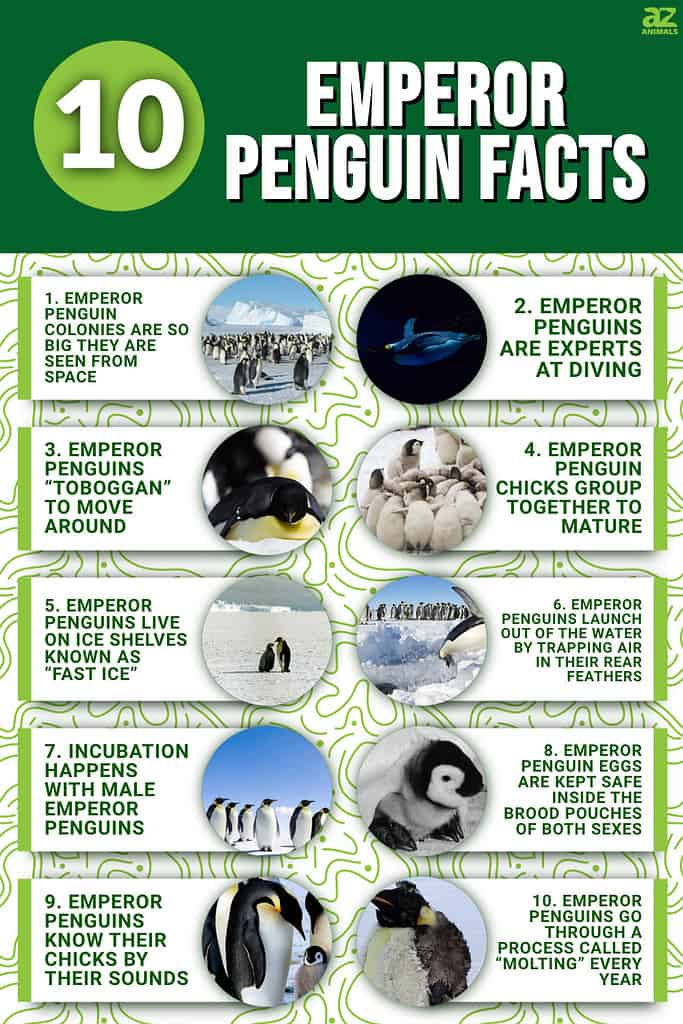
1. Emperor Penguin Colonies are So Big That Astronauts Can See Them from Space
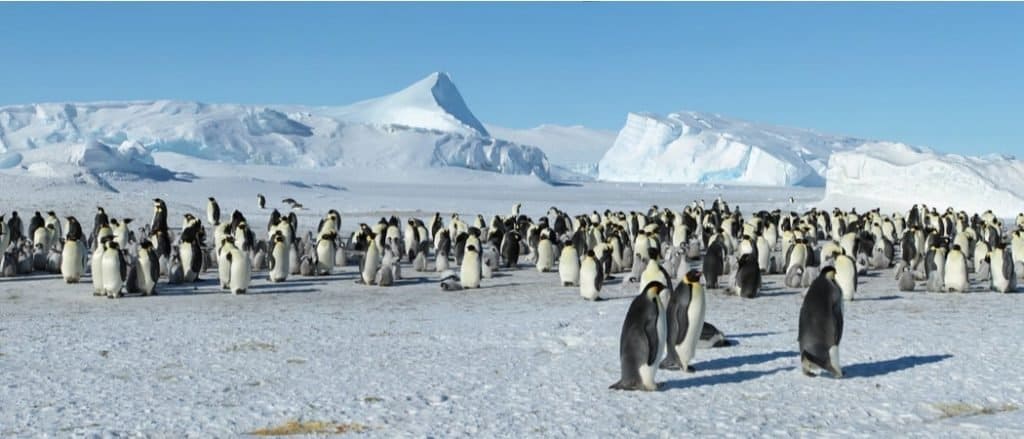
Colonies can number up to 5,000, while Coulman Island has almost 25,000 penguins!
©Sergey 402/Shutterstock.com
Emperor penguins reside in communities known as “colonies.” Colony members congregate to protect one another from Antarctica’s cold temperatures and glacier climate. In this way, they share body heat and protect themselves from harsh winds. They frequently switch places, taking turns on the outer edge, where conditions are the harshest.
Emperor penguin colonies have been located and counted using satellite technology. Currently, there are about 54 different colonies. A colony may include 5,000 penguins or more at one time. With almost 25,000 penguins, the emperor penguin colony at Coulman Island is the biggest.
2. These Birds Are Experts at Diving
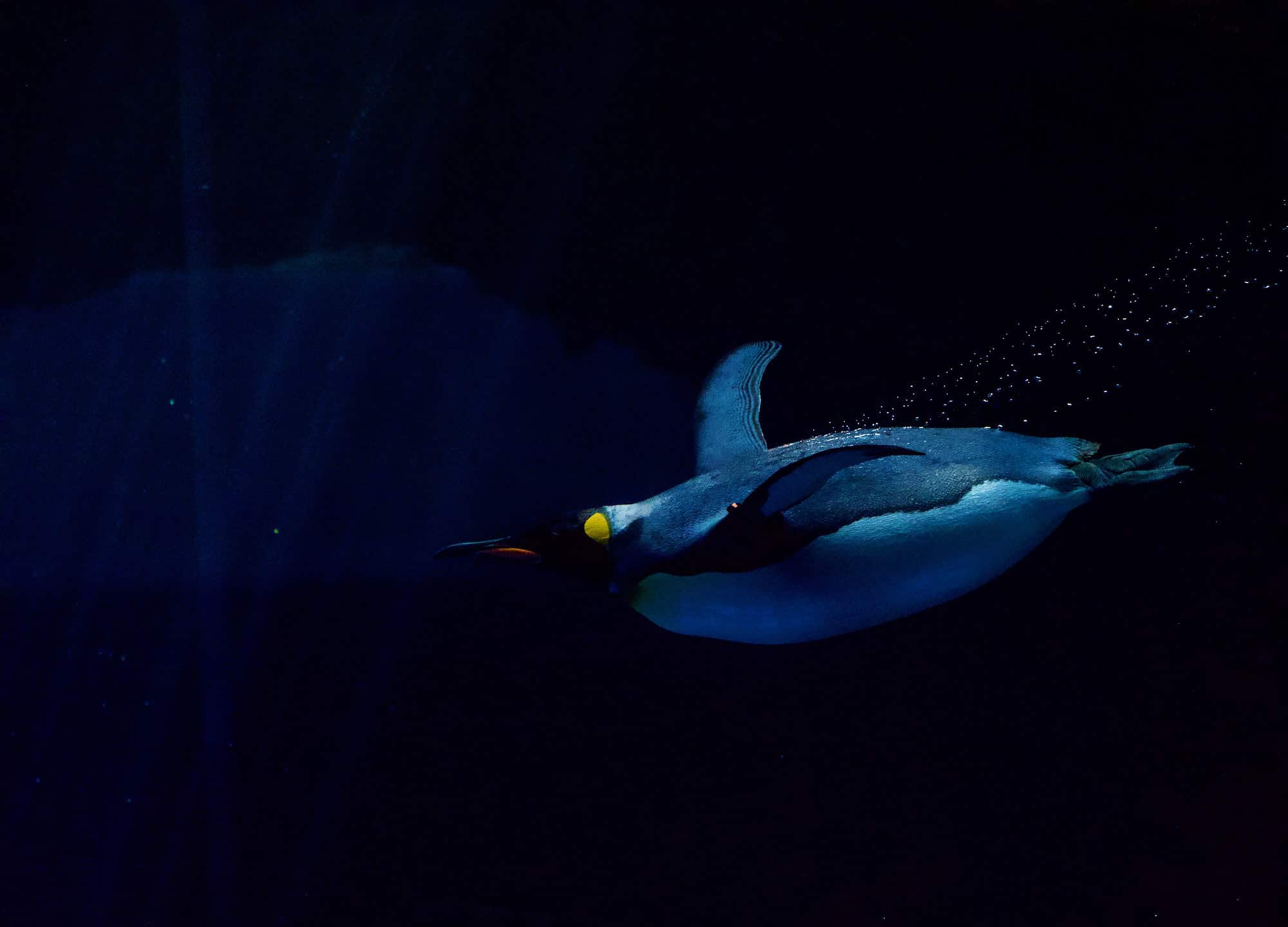
Emperor penguins can dive down as far as 1,850 feet!
©iStock.com/George Melin
Emperor penguins are the deepest divers in the bird world. They can stay underwater for 20 minutes at a depth of 1,850 feet. The dive that lasted the longest was 28 minutes. To conserve oxygen, their hemoglobin effectively “shuts down” organs that are not as vital. Their robust bones can sustain pressure that is 40 times greater than the surface pressure.
3. Emperor Penguins “Toboggan” to Move Around
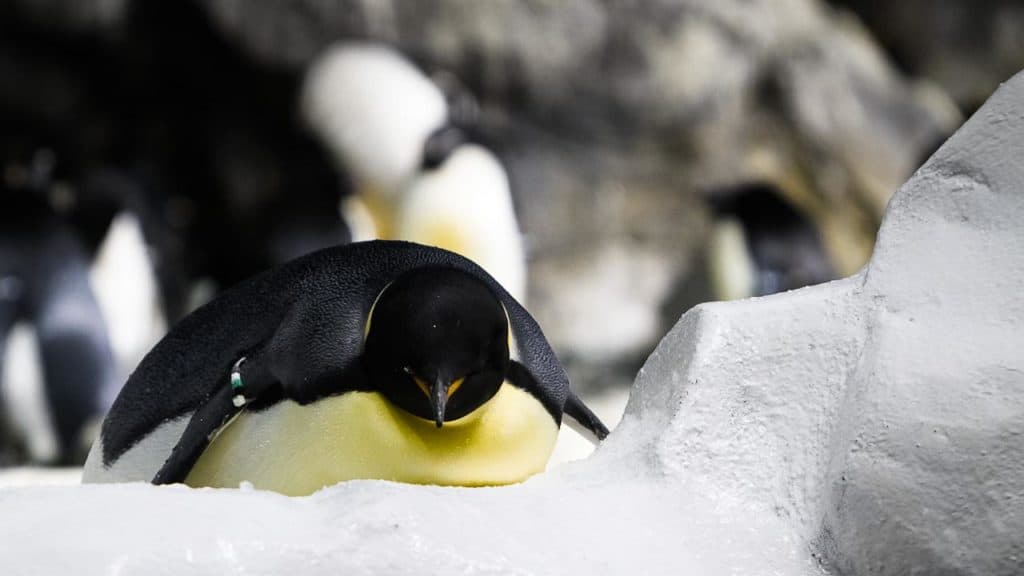
An emperor penguin sliding on its front is tobogganing.
©Tim Wang (jiazi) / CC BY-SA 2.0, Flickr – License
On the ice, a penguin moves around by lying down on its stomach and kicking its legs. This behavior is referred to as the “tobogganing technique.” This mode of transportation is suitable for all penguin species, including the regal emperor penguin. After landing from a dive, they can also complete a backflip.
4. The Chicks Group Together to Mature
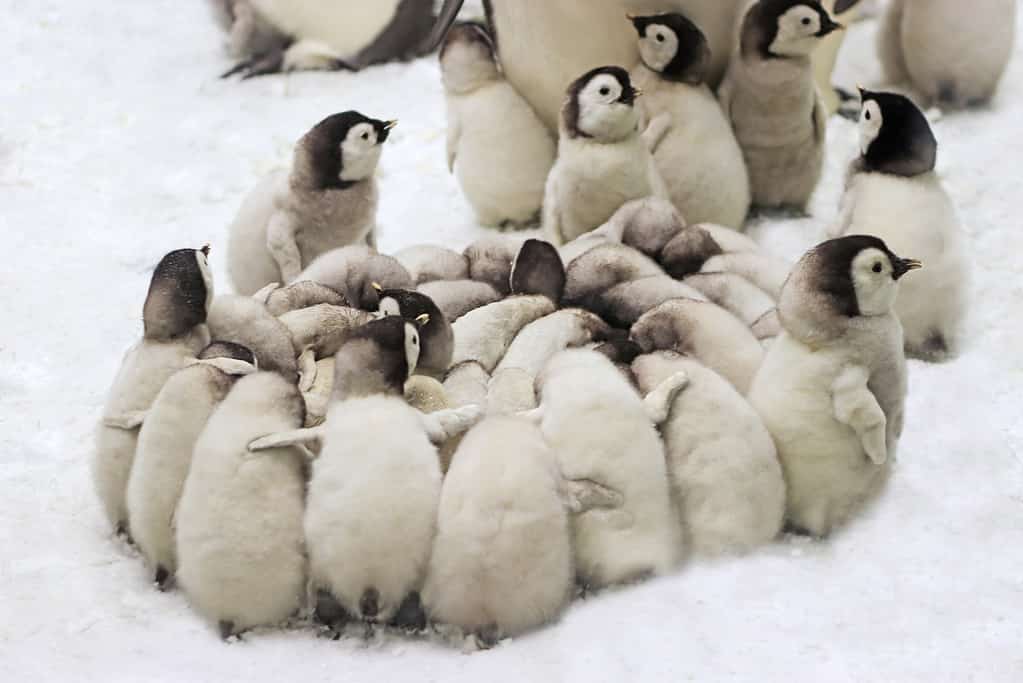
A group of emperor penguin chicks huddled to ward off the chill from the frosty wind.
©iStock.com/Gabriele Grassl
Around seven weeks after birth, chicks gather to form “creches,” or groupings. The juvenile penguins congregate in these huddles for warmth, safety, and convenient parental care.
5. Emperor Penguins Live on Ice Shelves Known As “Fast Ice”
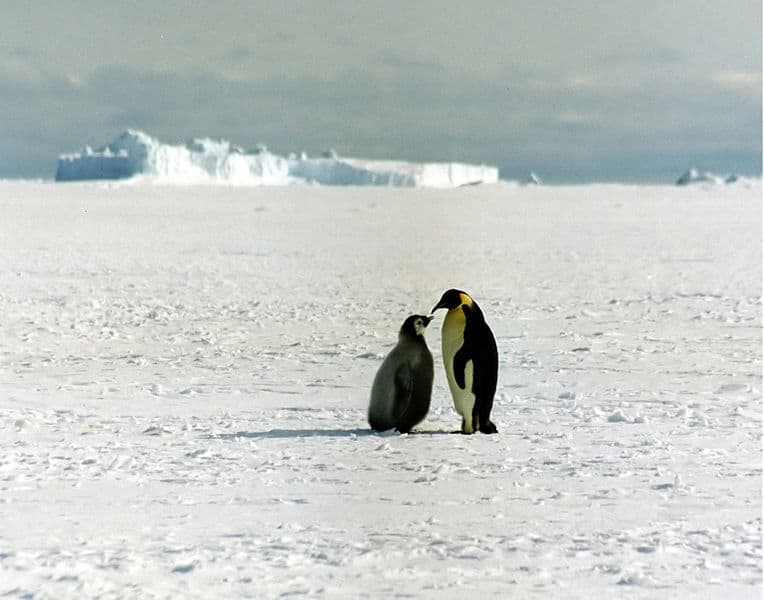
These largest of penguins prefer to breed and rest on sheets of “fast ice.”
©Brocken Inaglory / CC BY-SA 4.0, from Wikimedia Commons, the free media repository – License
Emperor penguins have sleek bodies and wings that function as flippers for swimming. Like all penguins, they are flightless. Ice that is affixed to land or shelves of ice is known as “fast ice.” These solid sheets of ice that penguins rest on are made of frozen and solidified ocean water and are wedged between islands or icebergs. On these icy platforms, breeding lasts almost the entire season.
They spend a substantial portion of their lives on ice, which is disintegrating and melting due to climate change and global warming. Their rapidly disappearing habitats have a significant impact on their population numbers.
6. They Launch Out of the Water by Trapping Air in Their Rear Feathers
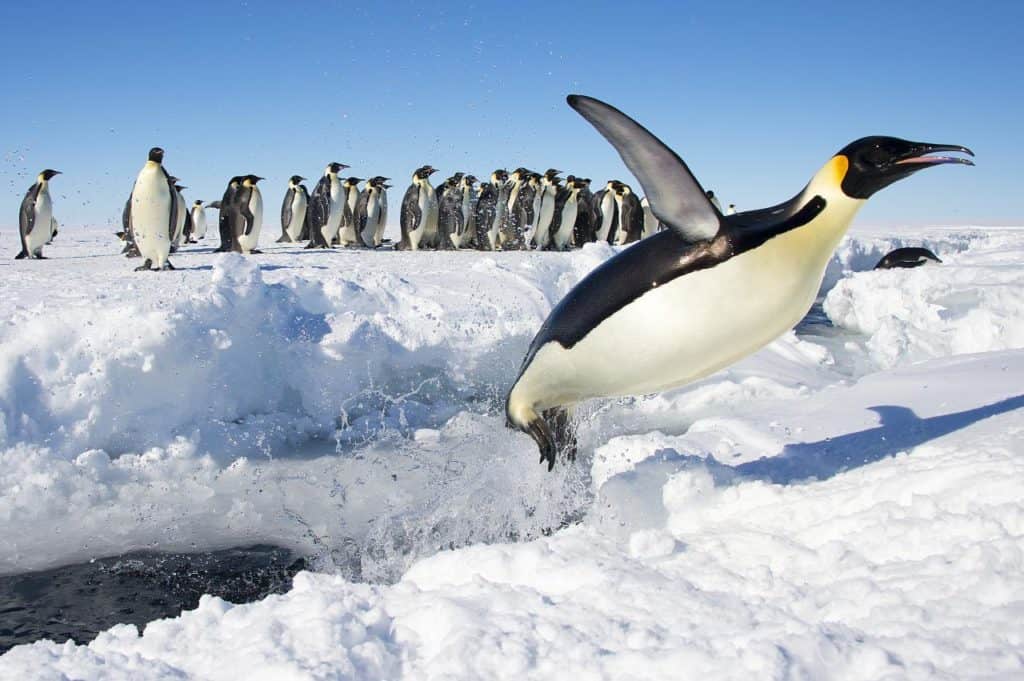
Emperor penguins trap air under their wings to launch out of the water!
©Christopher Michel / CC BY 2.0, Flickr – License
Using air trapped under their wings, emperor penguins launch themselves out of the water. As a result, they can swim twice as fast as usual and swim back to the ice. Air catches in a fine, downy mesh at the base of emperor penguin feathers in microscopic filaments that are just 20 microns in diameter (or less than half the breadth of a human hair). The feathers’ bases clamp shut by separate muscles, sealing in the air that the birds gather.
7. Incubation Happens with Males
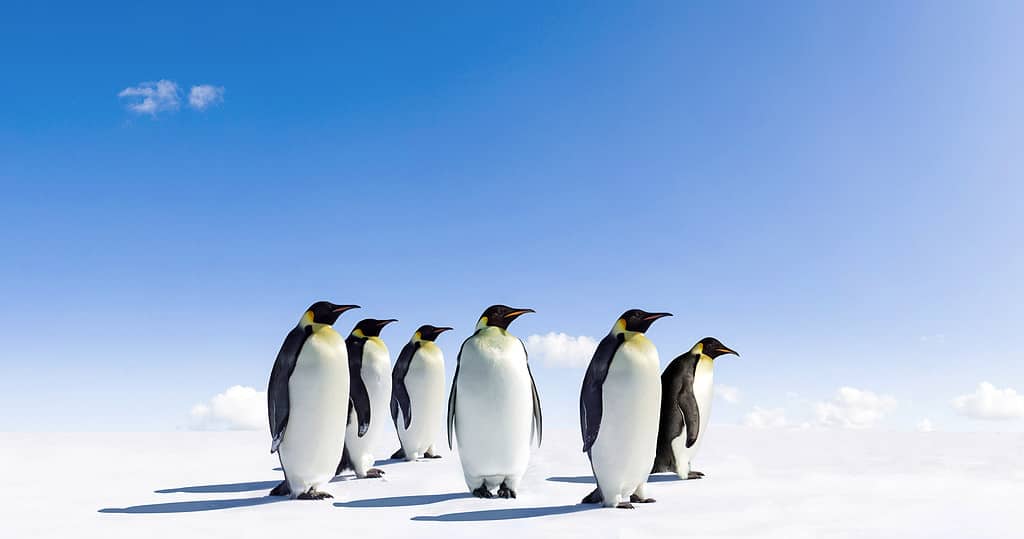
Male emperor penguins incubate the eggs, while females search for food.
©iStock.com/Coldimages
This species exclusively reproduces throughout the Antarctic winter. When a female penguin has finished nesting, she will go far from her colony to find food. Traveling distances of 80 to 160 kilometers are common, and many females do not come back until the incubation is through, which is typically 60 days.
Males are responsible for egg incubation during this time, braving winds of up to 200 miles per hour and temperatures that can dip to below -50 degrees Celsius. The male can’t go on a foraging trip of hundreds of kilometers without having to wait for the female to return.
8. Emperor Penguin Eggs Are Kept Safe Inside the Brood Pouches of Both Sexes
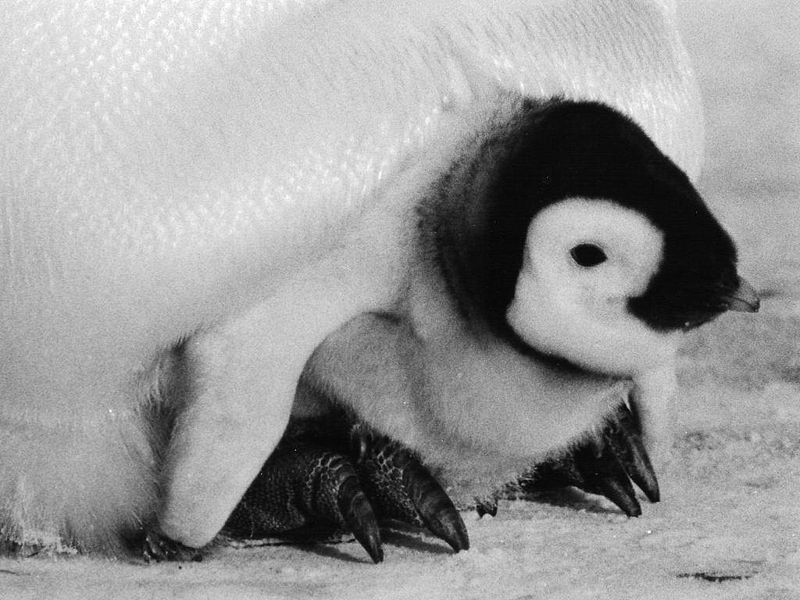
Emperor penguin chicks keep warm in their parents’ brood pouches.
©Mtpaley / CC BY 2.5, from Wikimedia Commons, the free media repository – License
Male emperor penguins incubate their eggs by balancing them on the tops of their feet, then storing them in a brood pouch. This pouch is essentially a specialized abdominal chamber with a feathered skin lining. When the eggs hatch, the mothers are in charge and will transport their young using their pouches. Without the safety and warmth of these pouches, chicks in the Antarctic would likely die in less than an hour.
9. They Know Their Chicks by Their Sounds
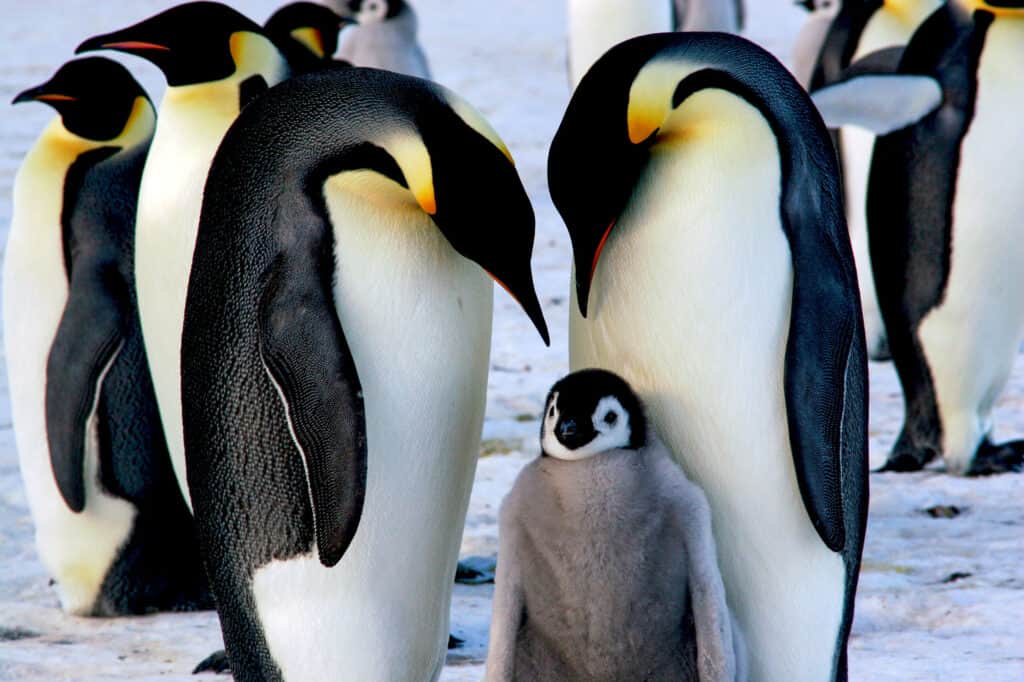
The cry of each chick is unique and recognized by the parent.
©iStock.com/BernardBreton
Adults distinguish each penguin by its unique cry. Parents can recognize their young by their sounds and will only feed those that are their own. Emperor penguins have a distinctive two-voiced call that is useful for identifying specific individuals. The technique uses a peculiarity in avian anatomy: The syrinx, a vocal organ, breaks into a fork where the trachea joins the lungs in birds. This enables many bird species to simultaneously make two distinct vocalizations.
10. Emperor Penguins Go Through a Process Called “Molting” Every Year
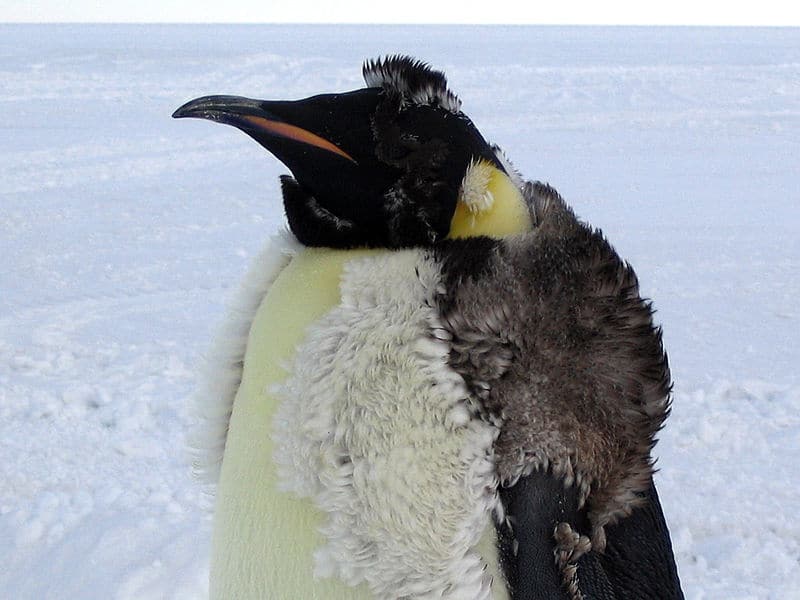
Annually, emperor penguins molt, usually at the conclusion of the breeding season.
©Carlie Reum, National Science Foundation, Public domain, via Wikimedia Commons – License
The emperor penguin undergoes an annual molt and annual feather loss, typically after the breeding season. Patches of lost feathers on a penguin going through this procedure might give the animal an unwell appearance. Emperor penguins begin their molting process early in the summertime when the pack ice covering the Antarctic Ocean is beginning to melt. The origin of these molting birds seen by passing ships is a mystery, as the locations are usually far away from other existing colonies.
The photo featured at the top of this post is © BFS Man / CC BY 2.0, Flickr – License / Original
Thank you for reading! Have some feedback for us? Contact the AZ Animals editorial team.







